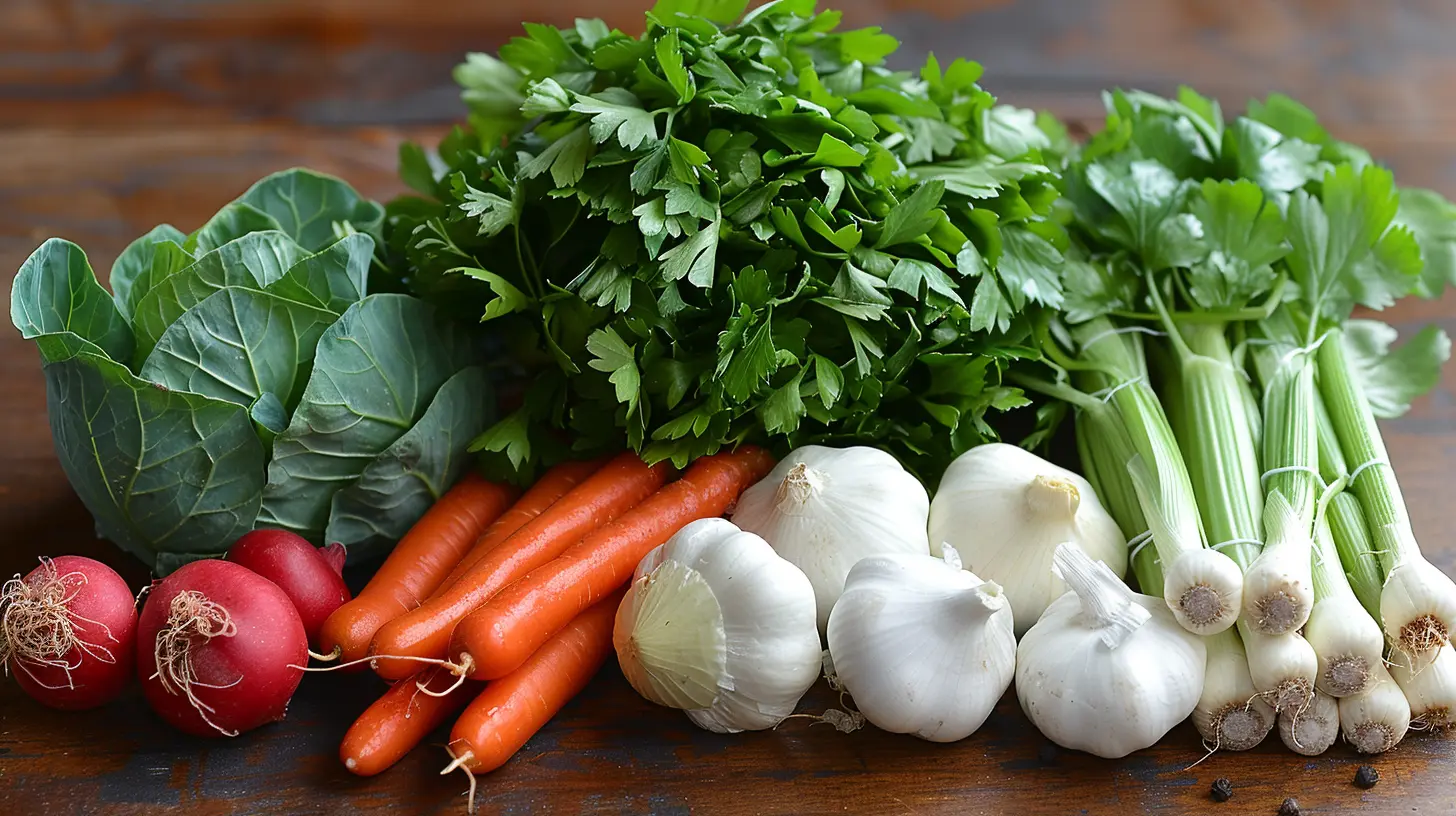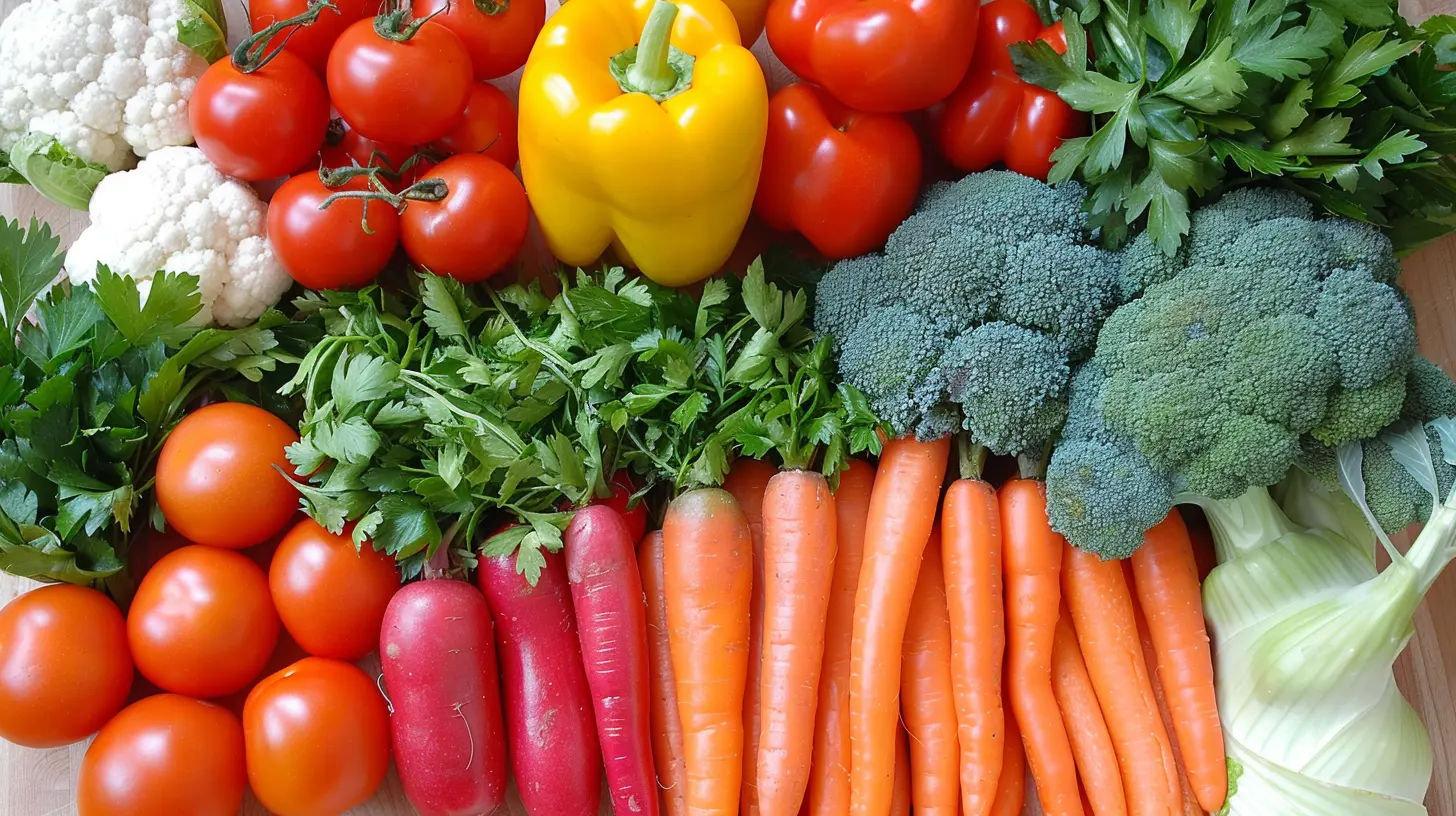Cooking with Fresh, Organic Ingredients for Better Health
26 November 2025
Let’s face it — we’ve all been lured by the siren song of junk food at some point. That greasy, cheesy pizza that whispers sweet nothings to your soul, or the chips that mysteriously vanish from the bag (spoiler alert: it was you). But then reality hits like a sugar crash, and suddenly you're thinking, “Maybe I should eat something that didn’t come out of a microwave or a foil bag.”
Well, my friend, you’re in the right place. Let’s talk about cooking with fresh, organic ingredients — the kind of stuff that makes your taste buds happy and your insides throw a victory parade. It's easier (and tastier) than you think, and yes, it really can lead to better health.

Why Organic? Aren’t All Veggies the Same?
Ah, this question. Imagine a tomato. Now, imagine that tomato without pesticides, grown in rich soil, kissed by the sun, and treated like the VIP it truly is. That, my friend, is an organic tomato — and it’s a whole different ballgame.Organic produce is grown without synthetic pesticides, herbicides, or genetically modified organisms (GMOs). In plain English? It’s the real deal. You’re getting the full flavor and nutrients, minus the chemical cocktail.
Now don’t get me wrong, non-organic veggies are still better than cookies when it comes to nutrition. But if you’re looking to level up your health game, going organic is a solid move.

The Health Benefits of Going Fresh and Organic
So, what’s the big deal with fresh, organic ingredients? Glad you asked. Buckle up — here come the benefits:1. Fewer Chemicals, More Nutrients
Organic produce typically contains higher levels of antioxidants, vitamins, and minerals. And guess what? Antioxidants are like little bodyguards for your cells. They fight off inflammation and oxidative stress (aka the bad stuff that ages you and increases disease risk).2. Better for Your Gut
Fresh foods, especially fruits and vegetables, are packed with fiber that keeps your digestive system humming along. No more feeling like a balloon after eating — just smooth sailing.3. Boosted Immune System
With more nutrients and fewer toxins, your immune system gets a break. It can focus on real threats instead of constantly battling low-grade inflammation caused by processed foods.4. Weight Management Without the Math
Counting calories is about as fun as folding fitted sheets. But when you eat whole, unprocessed foods, your body naturally regulates hunger and fullness. It’s like your body finally gets the memo on when to stop eating.
Fresh Isn’t Just a Buzzword — It’s a Lifestyle
There are two kinds of people: those who love grocery shopping and those who treat it like a reconnaissance mission. Regardless of your camp, choosing fresh foods doesn't have to be complicated.Tips for Finding Fresh, Organic Ingredients
- Local Farmers' Markets – These are goldmines for seasonal, organic produce. Bonus: you’re supporting local growers who do a happy dance every time you buy from them.- Organic Section at Grocery Stores – Most big-name stores now have a dedicated organic aisle or labels to guide you. Just make sure you check those labels — “natural” doesn’t always mean organic.
- CSA Programs (Community Supported Agriculture) – Sign up for a weekly produce box from a nearby farm. It’s like a subscription box, but for spinach.
Watch Out for Sneaky Marketing
Labels can be deceiving. “Natural,” “farm fresh,” and “eco-friendly” don’t necessarily mean the food’s organic. Look for the certified organic logo to be safe. No logo? No go.
Cooking at Home: The Unsung Hero of Healthy Living
Here’s a plot twist: cooking isn’t just for chefs or people who own spice racks alphabetized by flavor. Anyone can cook — and when you start with quality ingredients, you don’t need a culinary degree to make mouthwatering meals.Unleashing Your Inner Chef (The Easy Way)
You don’t need to be the next Julia Child. Just start with simple recipes that highlight the freshness of your ingredients. Think roasted veggies, grilled fish, vibrant salads with homemade dressings, or even a hearty soup.Keep it simple. The fresher the ingredient, the less you need to fuss with it.
A Week of Organic, Fresh Deliciousness
Let me paint you a picture. Here’s what a week of meals using fresh, organic ingredients could look like:- Monday: Roasted sweet potato and black bean tacos with avocado-lime crema
- Tuesday: Grilled wild salmon with quinoa and garlic green beans
- Wednesday: Creamy coconut lentil curry with organic basmati rice
- Thursday: Zucchini noodles tossed in a tomato-basil sauce topped with organic goat cheese
- Friday: Chickpea salad with cucumbers, cherry tomatoes, lemon, and fresh parsley
- Saturday: Grass-fed beef stir-fry loaded with broccoli, bell peppers, and snap peas
- Sunday: Spinach and mushroom frittata with a side of organic berries
Mouth watering yet?
The Flavor Factor: Why Organic Tastes Better
Let’s take a quick detour to Flavor Town. That shine you see on non-organic apples? Often wax. That extra “crunch” in conventional lettuce? Sometimes preservatives. Organic ingredients have nothing to hide — their flavor shines through.When foods are grown in nutrient-rich soil and harvested at peak ripeness, they pack more flavor. Ever bitten into a peach that made you question every peach you’ve eaten before? Yeah, that’s the organic difference.
But Isn’t Organic More Expensive?
Yes… but also, not always.While organic items tend to cost a bit more upfront, there are ways to save:
- Buy in season – Strawberries in winter? Pricey. Strawberries in June? Jackpot.
- Skip the fancy packaging – Buy loose produce and generic organic brands.
- Invest in a CSA or co-op – You get more value for bulk produce.
- Focus on the Dirty Dozen – Prioritize organic for the top 12 produce items with highest pesticide residue (like strawberries, spinach, and apples).
Think of it like this: You can invest in your health through food, or you can pay later in medical bills. Your call.
Cooking with Kids? Make It a Family Affair!
If you’ve got tiny humans at home, invite them into the kitchen. Kids are more likely to eat healthy foods if they’ve helped prepare them. Let them wash the vegetables, stir the soup, or even mash the avocado (every toddler’s dream job).Cooking with kids builds skills, creates memories, and subtly helps them form a better relationship with food. Win-win-win.
The Secret Sauce: Mindful Eating with Organic Foods
When you’ve prepared a meal from scratch with ingredients you carefully picked out, something magical happens: you naturally eat slower, savor more, and feel more satisfied. It’s like cooking becomes yoga for your soul — minus the stretchy pants.Let your meals be an experience. Put your phone down, sit at a table, and give your food the love it deserves. Your body (and Instagram feed) will thank you.
Simple Organic Swaps to Get You Started
Not sure where to start? Dip your toes in with these easy swaps:- Swap white rice with organic brown rice or quinoa
- Trade sugary cereal for organic rolled oats with fruit
- Replace soda with herbal teas or fruit-infused water
- Skip margarine for organic grass-fed butter or avocado
- Use real maple syrup instead of “pancake syrup” (which is often just flavored corn syrup)
Little changes can make a big difference over time. Think of it like compound interest — for your health!
The Takeaway (No, Not the Takeout Kind)
Cooking with fresh, organic ingredients isn’t about turning into a health nut overnight or swearing off dessert forever. It’s about making conscious choices that add up to a healthier, happier you.Start small. Maybe just one organic meal a day. Choose ingredients that excite you. Experiment. Have fun. And remember — even if you burn the rice or overcook the kale, you're still doing something amazing for your body.
So grab your spatula, hit the farmers’ market, and get cooking. Your future self will high-five you from a mountaintop.
all images in this post were generated using AI tools
Category:
Healthy CookingAuthor:

Madeline Howard

